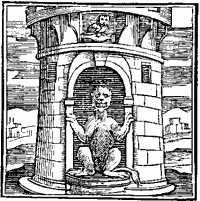Dzongkha, the national language of Bhutan, has been relegated to the status of a dialect of Tibetan in Microsoft products. Rather than being labelled “Dzongkha” or “Bhutan-Dzongkha,” it is identified as “Tibetan – Bhutan” in the recently released beta version of Windows Vista. This is apparently an official Microsoft policy, likely aimed at appeasing China.
Microsoft has barred the use of the Bhutanese government’s official term for the Bhutanese language, Dzongkha, in any of its products, citing that the term had affiliations with the Dalai Lama. In an internal memorandum, Microsoft employees were told not to use the term Dzongkha in any Microsoft software, language lists or promotional materials since “Doing so implies affiliation with the Dalai Lama, which is not acceptable to the government of China. In this instance, replace “Dzongkha” with ‘Tibetan – Bhutan’.”
The Kingdom of Bhutan is situated in the Himalayas between India and Tibet. The state religion is the Drukpa Kagyu school of Tibetan Buddhism and Dzongkha is the official language. Dzongkha has a linguistic relationship to modern Tibetan in a similar way to that between Spanish and Italian.
The use of the word Dzongkha was graded by Microsoft as a ‘ship-stopper’, which means that a product may not be produced in any form until the problem is resolved. Microsoft has four levels of error severity, ship-stopper being the most severe.
Likely uses of the term may have been in Language Lists for Microsoft products, particularly the upcoming release of the next version of the Microsoft Windows operating system, Windows Vista. (Source: Microsoft Sensitive to Chinese Pressure on Bhutan Tibet Link, Tibet News. )
I didn’t know anything about Dzongkha, so I did some searching and found this:
Dzongkha is the modern Bhutanese vernacular language derived from Old Tibetan through many centuries of separate evolution on Bhutanese soil. Modern Dzongkha differs from Classical Tibetan as much as modern French does from Classical Latin. Only a few decades ago, the first attempts were undertaken to write in the vernacular in Bhutan, and the strong liturgical tradition in Bhutan has maintained the use of Classical Tibetan as the literary language to the present day. (source)
If this is accurate, the situation sounds familiar: A literary language (Classical Chinese in China, Classical Tibetan in Bhutan, Latin in Europe) continued to be used long after it was no longer spoken by the masses because over time the language had evolved in different ways in different places, becoming new languages (Mandarin, Cantonese, Hakka, etc., in China; Dzongkha and Tibetan in Bhutan and Tibet; French, Spanish, Italian, etc. in Europe). But because people in different locales primarily used the same literary language rather than writing in their own [modern] languages, their mutually unintelligible languages were mislabeled “dialects.”
But even if everyone in Europe were to switch to writing in Latin or even Italian, that wouldn’t make French, Spanish, Portuguese, etc., “dialects.” Similarly, the use of Modern Standard Mandarin in China as the written language doesn’t mean that Mandarin, Cantonese, Hakka, Taiwanese, etc., aren’t all separate languages.
And, lest I pass over the issue of romanization, Dzongkha is written in the Tibetan script and also has an official romanization system, “Roman Dzongkha,” which makes use of all the letters of the Roman alphabet other than F, V, Q, and X. Its three diacritic marks are the apostrophe, the circumflex accent, and the diaeresis. Bhutan, however, is not expected to replace Bhutanese orthography with Roman Dzongkha.
And for Suzanne, here’s a Dzongkha keyboard.
additional source: Dzongkha: out of Windows?, Kuensel, Monday, September 26, 2005.

 Before Champollion deciphered the Rosetta stone and unlocked the secrets of hieroglyphic writing, many wrongly believed that Egyptian hieroglyphs represented an ideographic form of writing. Indeed, the very word “ideographic” comes to us via Champollion. “It is ironic that the scholar who demonstrated the falsity of the old belief in Egyptian as symbolic and nonphonetic should have helped to popularize terms that powerfully reinforced the popular misconception of both the Egyptian and Chinese systems of writing,” DeFrancis notes in his discussion of the
Before Champollion deciphered the Rosetta stone and unlocked the secrets of hieroglyphic writing, many wrongly believed that Egyptian hieroglyphs represented an ideographic form of writing. Indeed, the very word “ideographic” comes to us via Champollion. “It is ironic that the scholar who demonstrated the falsity of the old belief in Egyptian as symbolic and nonphonetic should have helped to popularize terms that powerfully reinforced the popular misconception of both the Egyptian and Chinese systems of writing,” DeFrancis notes in his discussion of the